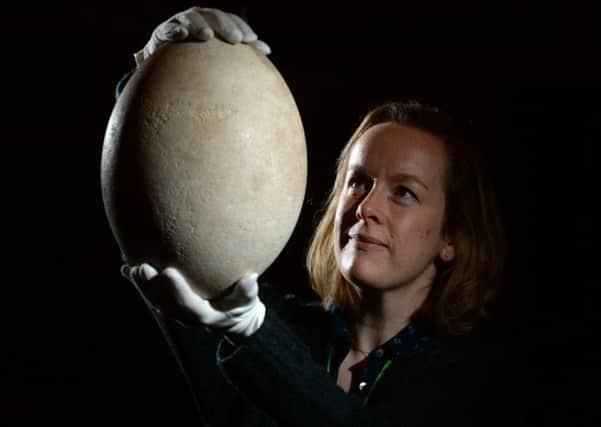Natural scientist tells all behind Leeds Museum's '˜egg-citing' archive


In 2007, up to 10,000 eggs, belonging to birds both living and extinct, were delivered to the Discovery Centre from Leeds City Museum in a state of disorder.
Eleven years, and a lot of hard work, later, natural science curator Claire Miles has taken on the daunting task of archiving the last 4,000 eggs in just 30 days.
Advertisement
Hide AdAdvertisement
Hide Ad“It’s really exciting,” said Claire, “each clutch [of eggs] tells its own little story.”
“A lot of them are local, from the Wakefield-Leeds area, which makes them very interesting to us.”
The exact number of bird eggs owned by the Discovery Centre, and housed in a state-of-the-art storage facility at Clarence Dock, remains unknown but the total is believed to be between eight and ten thousand.
Though the archive dates back to the nineteenth century, the vast majority of the current collection came from mid-twentieth century acquistions. Over 1,500 of the original eggs were destroyed during a Second World War air raid in March 1941, in which the City Museum suffered a direct hit.
Advertisement
Hide AdAdvertisement
Hide AdIt was a change in UK law, banning the public collection of wild bird eggs, in the 1950s that helped replenish the museum’s stock, with a rush of specimens being taken in.
Claire said: “Collecting eggs is illegal now so you’re not going to get these again. Each one’s a little snapshot of history.”
In recent years, the task of organising such a large collection has seen the centre’s team of experts unearth some truly thrilling discoveries.
Highlights include a penguin egg taken during one of Ernest Shackleton’s famous Antarctic expeditions and the extremely rare egg of a Madagascan Elephant Bird.
Advertisement
Hide AdAdvertisement
Hide AdRelated to modern kiwis, elephant birds have been extinct since the thirteenth century but, at 29cm in height, the Leeds-based egg is a testament to the enormity of the animals as they roamed the Earth.
“There’s quite a number of eggs which still need to be identified and that’s quite time consuming,” said Claire, “I think we can get it done.”
Once archived, the eggs should prove useful to students and researchers worldwide.
The Leeds Discovery Centre contains more than a million objects and is available to view for free by appointment only.
LOTS TO DISCOVER
Advertisement
Hide AdAdvertisement
Hide AdNot just home to eggs, Leeds Discovery Centre houses amazing specimens of national and international interest.
“We have a spectacularly diverse and impressive collection which includes some exotic and usual species from around the world,” said Leeds Museums and Galleries curator Rebecca Machin,
Mammoth tusks and dodo skulls can be viewed alongside a taxidermied giant panda and local Yorkshire fossils, shells and insects.